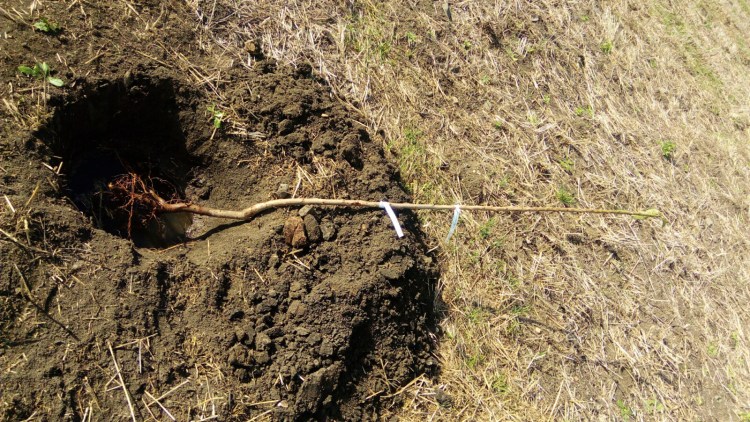Despite the cold, gray and sometimes snowy days, I am already thinking about what I’ll plant come spring.
My two most recent columns have been on garden catalogs and plant award-winners, and researching them gave me ideas for plants that I want – even though our garden doesn’t need them. From a more global perspective, I worry about climate change, and I know that growing trees and shrubs is a good way to store carbon and keep it out of the atmosphere.
Also, we are developing some free plants. For Christmas this year I gave my wife, Nancy, a flower arrangement created by a floral designer we both know and love. Although Nancy is a good designer in her own right, our garden doesn’t produce flowers at this time of year and, well, I couldn’t think of anything else to give her.
After a couple of weeks, the red twig dogwood and curly willow stems used in the arrangement were sprouting both leaves and roots, which we were both pleased and amazed to see. We plan to transplant these rooted stems into some potting medium and grow them in a window until it is warm enough to plant them outside.
Now, you might wonder, why am I going to plant such a tiny shrub? Don’t I want the impact of a tree or shrub that is almost full size?
No! When planting trees and shrubs, even if your budget is unlimited, smaller is better.
Right now the dogwood and willow we will plant are what professionals call whips – small, bare-root plants. Several online tree nurseries, including Maine-based Fedco, sell bare-root plants. These are smaller than those you buy at a local nursery, and you have to be prepared to plant them almost immediately after they are shipped to your home. That said, they are a great value.
Bare-root plants are an extreme example, but smaller is better even for gardeners going the traditional route of buying a tree or shrub growing in a container at their local nursery.
Not everyone understands this. I have had people tell me that they are older, they have the money, and they don’t want to sit around waiting for the plant to mature. They want instant gratification.
That gratification might be instant, but it won’t be long-lasting.
Those large plants have been growing for years in a nursery field, where they have been healthy and happy. But when they are dug up, a large percentage of their roots are left behind. The stem and remaining root ball, wrapped in burlap, are put up for sale.
What the tree suffers when planted in the new owner’s yard is called transplant shock. A much smaller amount of root material, maybe only a third of what the tree once had, will be left to feed the same amount of above-ground tree.
Transplant shock is the reason so much care is given to a newly planted tree. The hole for the tree should be three times the width of the root ball, with the hole saturated with water after it is dug. The soil returned to the hole must be enriched with compost.
The newly planted tree must be watered daily, and I mean absolutely drenched, for several weeks and then watered thoroughly once a week until the ground freezes. That pampering is required because the tree has lost so much of its root mass.
If the nursery-purchased tree is a smaller specimen, transplant shock will be greatly reduced. The tree likely was planted in a pot as a whip, and while it might have been moved to larger pots as it grew, it never lost a large percentage of its root mass.
Several studies have shown that after 10 years, trees planted as smaller specimens are not only healthier than the ones planted as large specimens, they have caught up with and often surpassed them in size. So why would anyone want the larger trees? Beyond instant gratification, residential contractors pick large shrubs and trees to make the landscape around a house look more complete.
But working for yourself, you should go small. Less expensive and more apt to thrive, smaller trees offer other benefits: You can drive them home in an SUV or a small pickup truck. Most homeowners can easily plant them. The huge, almost mature trees often require professional hauling and paid crews for planting.
Ten years later, when looking at the smaller trees you decided on, you will have the delayed gratification of looking at excellent, healthy plants. And remember: Since smaller shrubs cost less, you’ll have more money to spend on other shrubs.
Tom Atwell is a freelance writer gardening in Cape Elizabeth. He can be contacted at: tomatwell@me.com.
Comments are not available on this story.
Send questions/comments to the editors.


